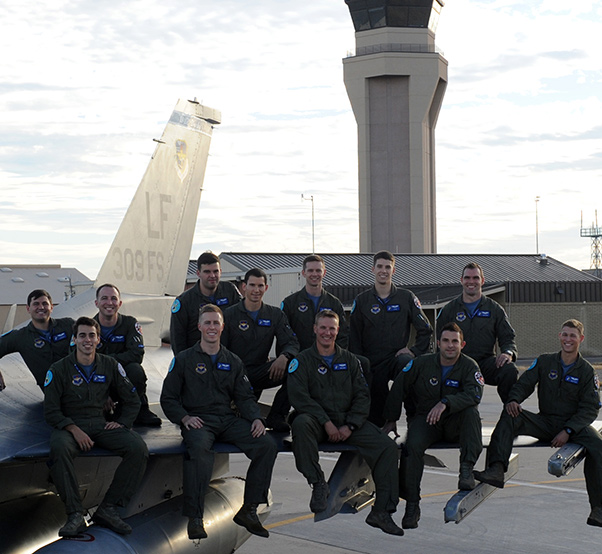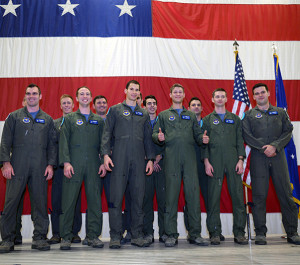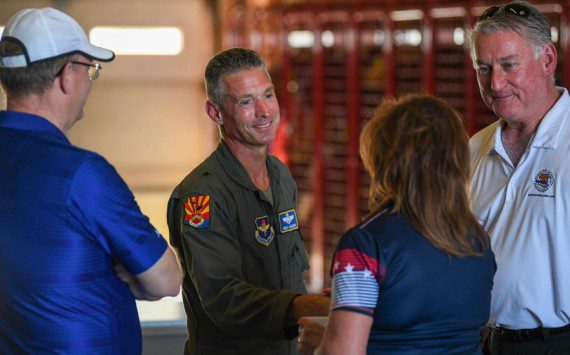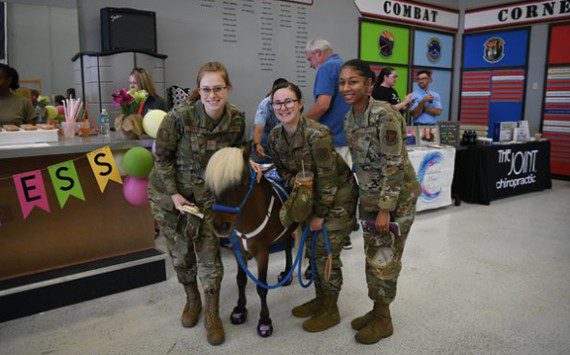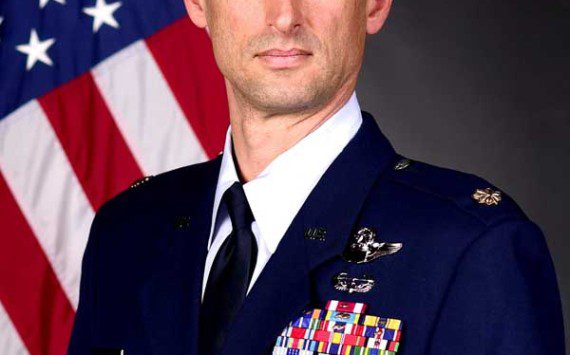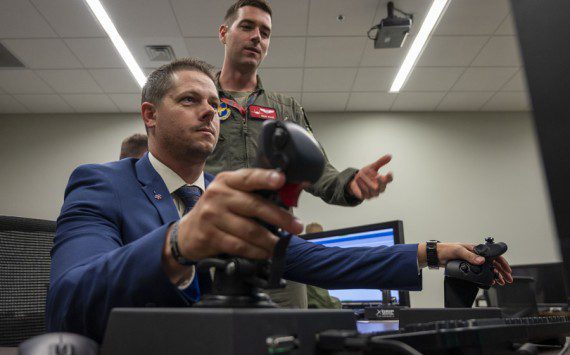A class of F-16 Fighting Falcon pilots under the tutelage of instructor pilots from the 309th Fighter Squadron graduated Dec. 16, 2016, following approximately nine months of training at Luke Air Force Base, Ariz.
Class 16-ABC completed their comprehensive basic flight course in a high-tempo curriculum stressing mission-ready combat skills. Training to refine their abilities will continue at the various bases they will go to, but the B-course has left them ready to deploy at a moment’s notice.
“It was fast-paced and challenging, but it was definitely rewarding,” said Maj. David Sproehnle, 309th FS F-16 graduate pilot and class leader. “I’ve been deployed before and have been in combat in other aircraft, so I understand how important it is that we do our job. I think everybody understands the severity of what we may need to do, but we all know what we signed up for and we’re ready.”
As a reflection of the depth of their training, each graduating pilot will be sent directly to operational units around the world.
“Whether these guys are going to U.S. Air Forces in Europe and Africa, Pacific Air Forces, or stateside, none of them are going to sit for two or three years,” said Maj. David Bennett, 309th FS director of operations. “Most of them are going to deploy pretty soon after they get there, or be in places where they’re already near potential flashpoints.”
The students’ training time was administered in two major parts: classroom academic learning over about two months and aerial combat training over about seven months.
“We started class back in March,” Sproehnle said. “The academic portion lasted all day, every day in classrooms for about four to six weeks with some simulator time mixed in.”
The flight phase of the students’ training gave them practice in virtually all of the mission-sets they are expected to be capable of completing as combat Air Force fighter pilots.
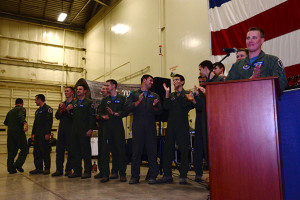
Maj. David Sproehnle, 309th Fighter Squadron graduate pilot and class leader, speaks on behalf of class 16-ABC of Luke Air Force Base’s F-16 basic flight course training curriculum at their graduation ceremony Dec. 19, 2016.
“We’ve gone through air-to-air and air-to-ground training, mixed missions, weapons qualification, and participation in a large force exercise,” Sproehnle said. “We got the opportunity to see our training come to fruition by using everything we’ve learned to fight our way in, drop our weapons, and fight our way back out.”
As F-35 Lightning II tactics and capabilities mature and the F-16 approaches the age of retirement, the pilots of class 16-ABC understand they may be among the last generation of pilots for an aircraft which has seen four decades of service.
Despite this, the graduates are well aware that their role and the importance of their aircraft has not diminished.
“The F-16 will eventually be phased out of Luke and moved elsewhere for training to make way for the F-35, allowing the next generation of aircraft to come in and establish a reputation for air dominance,” Sproehnle said. “At the same time, the F-16 is still the backbone of the U.S. Air Force’s fighter inventory. The training, regardless of whether it’s here at Luke or somewhere else, is essential to maintaining air superiority in any current warzone.”
The F-16 is in active service with the air forces of more than two dozen nations around the world, some of which send personnel to train at Luke.
“The majority of our allied nations use the F-16,” Bennett said. “They’re used for everything. Some of our allies have had them for more than 30 years.”
In light of ongoing combat operations in the Middle East where F-16s engage in airstrikes against ISIS and provide close air support for allied and friendly ground forces, the importance of available F-16s and capable pilots remains.
“With the demand we’re getting from the combat Air Force for more pilots, we’re very aware of how important it is that we get these guys done on time,” Bennett said. “The squadrons that are currently out at war need these guys now.”
Bennett is confident that, until F-35 development is complete, the F-16 will maintain its role in building the future of airpower.
“If any other situations arise, it’s a pretty safe bet that F-16s will be involved,” Bennett said. “They’ll be around for as long as they have to be.”
